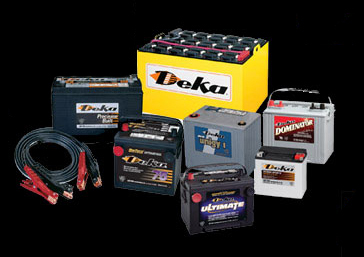Alternate Power
Alternate Power
The use of alternate power sources by Amateur Radio operators is critical to the mission of ARES-RACES. When disasters or other emergencies strike communities commercial power is often disrupted or knocked out completely. Amateur Radio operators must be able to provide communications independent of the commercial power grid for periods from a few hours to a week or longer. This capability is what made Amateur Radio so valuable in the days following Hurricane Katrina and during other widespread disasters.
Batteries
Most ARES-RACES personnel will use battery power to provide service in the initial phase of a communications emergency. The batteries used could be the internal cells in a handi-talkie or external batteries from 5AH to goliath cells of more than 100AH in capacity.
The types and sizes of batteries vary widely but the best choices are usually gel cells or deep-cycle marine batteries. If the period of service is 24 hours or less, it could be possible to rely solely on battery power. But, if service extends to two days or more, it will probably be necessary to use alternate power sources to furnish current or charge batteries.
An auto battery booster, used for starting a car with a discharged battery, is a good choice for a portable 12VDC power source. Many boosters contain gel cells with capacities from 15 to 25 AH. The batteries are contained in a rugged case desirable for field use and come equipped with AC-DC chargers.


Gasoline Generators
If service is required for extended periods or current consumption is anticipated to be significant, a gasoline generator will probably be required to power an emergency communications station. There are many good gasoline-powered generators available in a wide variety of sizes and price points. When selecting a gasoline generator, care should be taken to consider portability, noise properties and efficiency. Generators that are excessively large and those that produce a high noise level are probably not good choices. Minimum power output should be at least 1000 Watts.
Whenever using a gasoline generator, safety precautions should be observed. Position the generator in an area where noise and exhaust fumes will not adversely affect operations. Ensure the generator is properly ventilated. Shut the generator down when refueling and use proper safety precautions when handling and storing fuel.

Solar Arrays
When power requirements are more modest, in the 5 -20 Watt range, solar panels can often provide enough current to charge batteries. Many manufacturers make solar panels in the 10-30 Watt range that are adequate for charging batteries. Some solar panels are flexible and can be rolled and others fold out from hard-shell briefcases.
When selecting a solar charging system carefully consider power requirements and ALWAYS use the panels with a charge controller that will regulate output power. Unregulated output power can exceed 18VDC and could damage batteries or other equipment.
